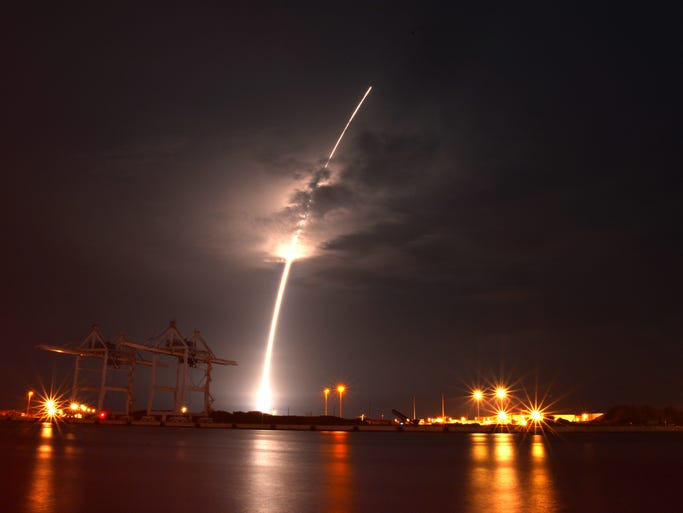Yes, this is trains related, just hang on...
I don't know when they made the switch but I noticed today while laying out a story on the latest NASA launch (which happened early this morning) that the "new" Atlas V rockets are transported to the launch pad by a train-powered MLP rather then the Crawler Transporter MLP that other rockets & the Space Shutter use. I don't know if this means the old Greasy Pigs are going to be retired soon, but it's an interesting development.
If you didn't know, Roscosmos (the Russian NASA) has always used trains to transport their rockets from the assembly area to the launch pad.
What little I can figure out about the train:
The train consists of a few cars, appearing to be flat cars with stuff mounted on top. In order the are:
Two Flat Car with a big white container thing, only on one track
Single Mobile Launch Platform (MLP), straddles 2 tracks
--After this point there are two trains mirrored to each other on the 2 tracks.--
Trackmobile (motive power)
Flat Car with white equipment taking up 2/3s and a grey generator-looking thing on the last 3rd.
Media:
http://www.wired4space.com/wp-content/uploads/AtlasV_MUOS1_MLP5.jpg
http://www.wired4space.com/wp-content/uploads/AtlasV_MUOS1_MLP2.jpg
https://www.youtube.com/watch?v=ZpPBxSajO80
peter
I don't know when they made the switch but I noticed today while laying out a story on the latest NASA launch (which happened early this morning) that the "new" Atlas V rockets are transported to the launch pad by a train-powered MLP rather then the Crawler Transporter MLP that other rockets & the Space Shutter use. I don't know if this means the old Greasy Pigs are going to be retired soon, but it's an interesting development.
If you didn't know, Roscosmos (the Russian NASA) has always used trains to transport their rockets from the assembly area to the launch pad.
What little I can figure out about the train:
The train consists of a few cars, appearing to be flat cars with stuff mounted on top. In order the are:
Two Flat Car with a big white container thing, only on one track
Single Mobile Launch Platform (MLP), straddles 2 tracks
--After this point there are two trains mirrored to each other on the 2 tracks.--
Trackmobile (motive power)
Flat Car with white equipment taking up 2/3s and a grey generator-looking thing on the last 3rd.
Media:
http://www.wired4space.com/wp-content/uploads/AtlasV_MUOS1_MLP5.jpg
http://www.wired4space.com/wp-content/uploads/AtlasV_MUOS1_MLP2.jpg
https://www.youtube.com/watch?v=ZpPBxSajO80
peter

